Colombia coffee bean processing method hand brewing parameters suggest how much is a cup of Colombia coffee
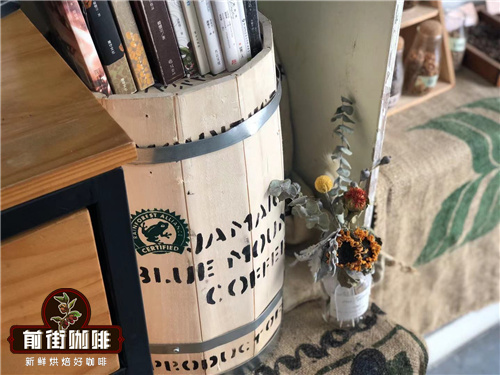
Professional coffee knowledge exchange more coffee bean information please follow the coffee workshop (Wechat official account cafe_style)
Most Colombian coffee beans grow on hillside farms at an altitude of 1500-2000 meters. Growing at such a high altitude, Qianjie Coffee believes that it has an advantage for Colombia, that is, it is hot during the day. the cold temperature cycle at night slows the growth of coffee beans, allowing natural sugars to be fully stored, forming a complex and elegant flavor.
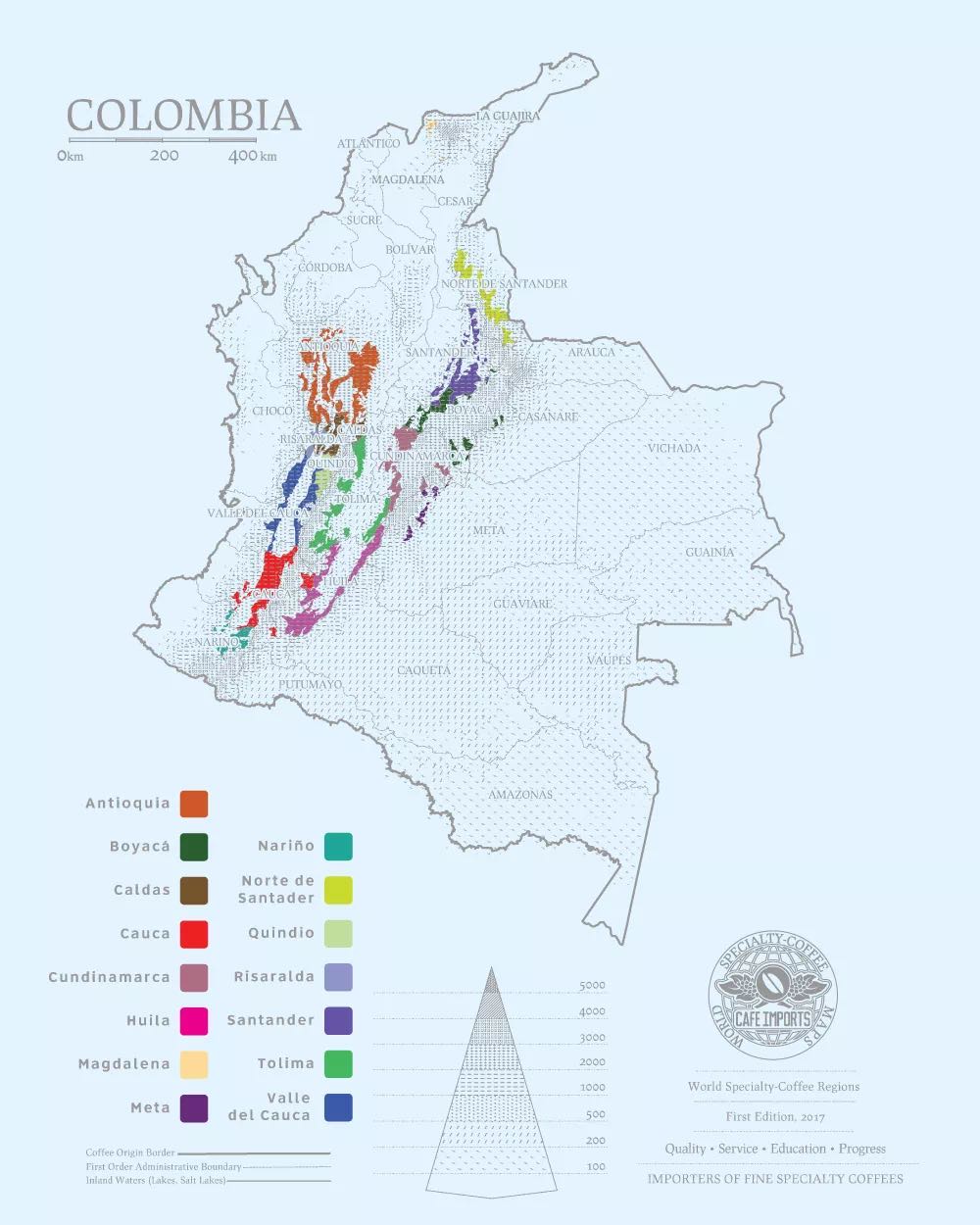
Southern Colombia, which is between 4,000 and 6000 feet above sea level, used to mix each other's coffee beans for export, although the overall quality is good. Coffee beans from the Huilan producing area, such as Qianjie Coffee, are located in the south. This is more competitive than coffee from large farms in northern Colombia.
Small farms in southern Colombia began to change their traditional practice and sell their own coffee beans separately. One small farm produces only about 10 sacks of coffee a year, and some even have only one sack of beans. This is what Qianjie Coffee calls "Micro-lot" coffee. Due to the unique microclimatic environment and intensive cultivation of farmers, coffee from each small farm has its own characteristics, and its quality is much higher than that of traditional mixed coffee from many farms, and there are often "overjoyed" discoveries. Although the price of coffee is much higher than ordinary commercial grade coffee and "Fairtrade coffee" in Colombia, it is still a hot item in the market.
According to Qianjie Coffee, most Colombian coffee beans are washed, and each small farmer family has a small special processor in which the harvested coffee fruit is poured into it, which removes not only the peel and pulp, but also most of the pectin, and only a very small amount of water is needed. Next, the shell beans with a small amount of pectin will go into a small pool or container, which may be a cement pool (some tiles) or a stainless steel bucket that will ferment overnight and loosen the residual pectin. Rinse with clean water the next day, and the washing process is completed.
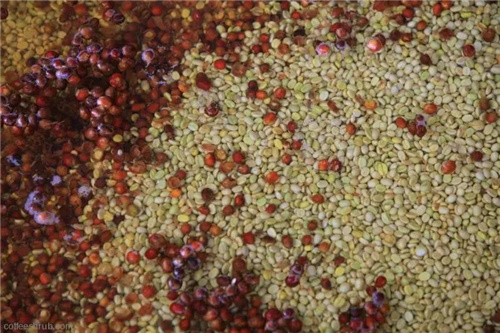
Dry, according to the weather, if the weather is good, of course the first choice is natural drying, there will be a small shed laid on the wooden scaffolding to dry in the shade; otherwise, it will be laid on an empty cement floor for drying; if the weather is not good, if it rains continuously, then use a dryer to dry, the dryer will have an intake temperature control, usually about 50 degrees Celsius.
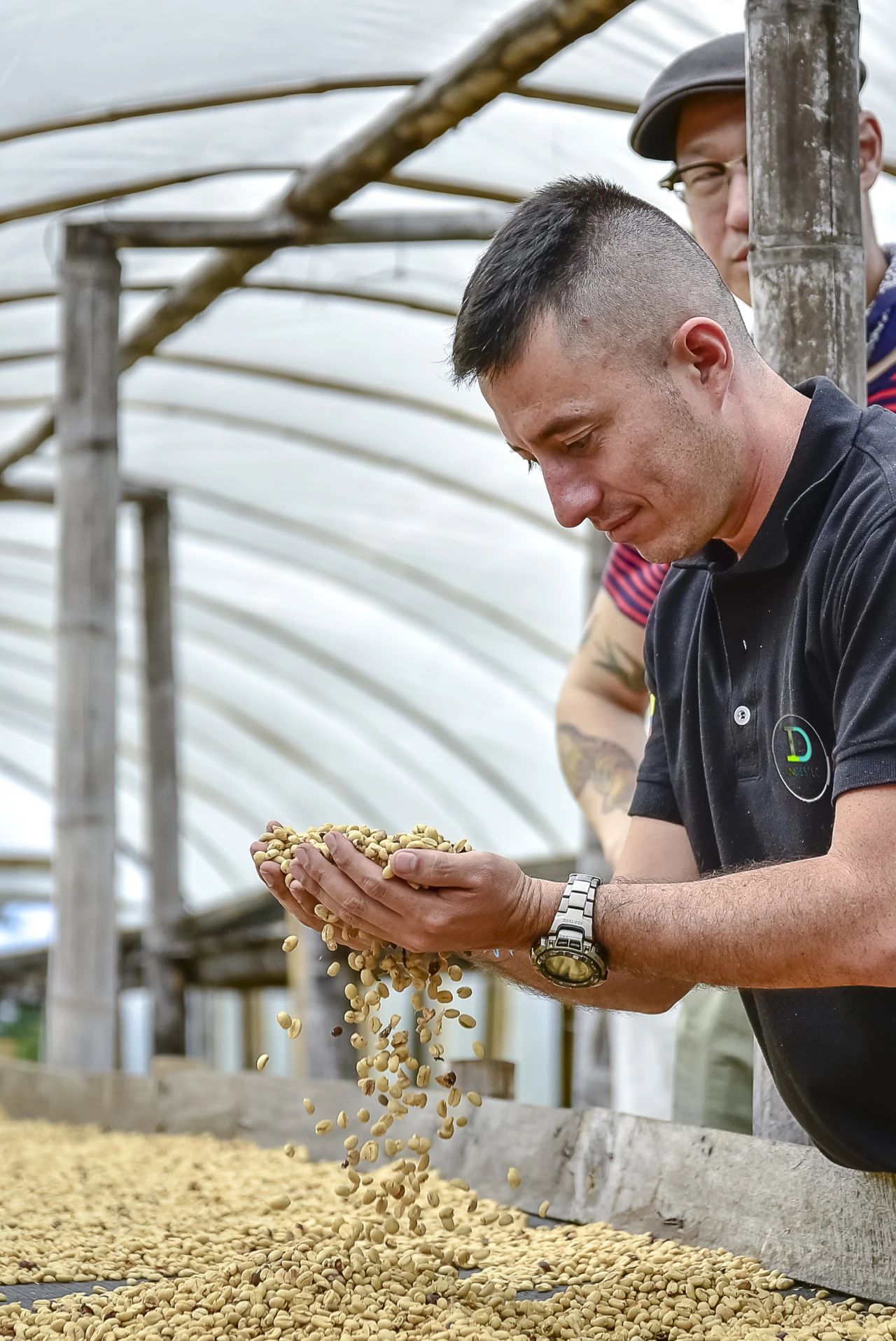
There are also many varieties of coffee in Colombia. The early varieties planted in Colombia were the old tin pickup and bourbon, which were replaced by Kaddura in 1970. Since 1961, CENICAFE began to study Timor varieties of Robusta blood, and then selected Timor and Caturra into Columbia's Katim series. After five generations of breeding, CENICAFE released Colombia's first disease-resistant variety Colombia in 1982, and then after the emergence of leaf rust in 1983, Colombia varieties began to be planted in large quantities.
Subsequently, CENICAFE continued its research and development, releasing the second disease-resistant variety Tabi (a hybrid of iron pickup, bourbon and Timor) in 2002, and the most functional disease-resistant variety Castillo so far in 2005. After the outbreak of leaf rust in 2008, Colombia began to vigorously promote Castillo cultivation. Kaddura is not only more productive per plant than iron pickup and bourbon, but also can be planted more per unit of acreage because the tree is more compact.
Like Qianjie Coffee, Columbia Rose Valley and Flower Moon Night Coffee beans are Kaddura and Kaduai varieties, all of which use anaerobic treatment, while Qianjie Coffee uses hand-brewing parameters of Hario V60 filter cup, 90 ℃ water temperature, 15g powder content, 1:15 powder-water ratio, and the grindness is 80% of the pass rate of Chinese standard 20 sieve. The hand flushing technique adopts the simplest three-stage style of Qianjie coffee, steaming with 30 grams of water for 30 seconds, small water injection to 125 grams for segments, water level drop to 225 grams when the powder bed is about to be exposed, remove the filter cup when the water level drop is about to expose the powder bed, (steaming starts timing) the extraction time is 2 grams 39th 00 ".
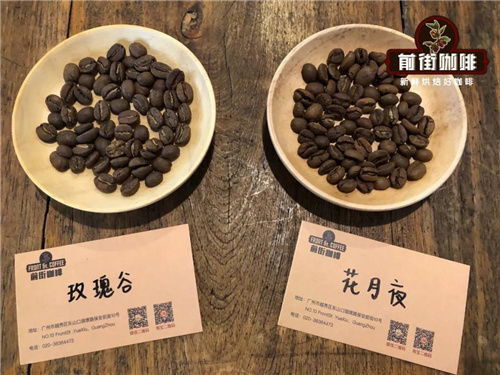
The Rose Valley coffee beans have a very strong peach flavor, accompanied by the aroma of rose and wine chocolate, with a sweet and sour taste like black grapes and a silky taste like cream toffee.
In addition to these two specially treated Colombian beans, there is also a semi-washed front street coffee Isabella coffee beans. This Colombian coffee bean is different from ordinary Colombian beans. Its variety is rare red bourbon. This pink bourbon has fresh floral aromas, sweet fruit juices of blueberries and green grapes, cherry in the middle and sweet brown sugar in the end. In terms of acid quality, it shows more citrus berry compound performance. The brewing method of this Colombian bean is the same as that of Rose Valley and Flower Moon Night coffee just mentioned in Qianjie Coffee. After brewing, there are citrus, berries and virgin fruits in the mouth. Under the change of temperature, it has the sweetness of caramel, a hint of fermentation, a floral and nutty aroma, and a smooth and clean taste.
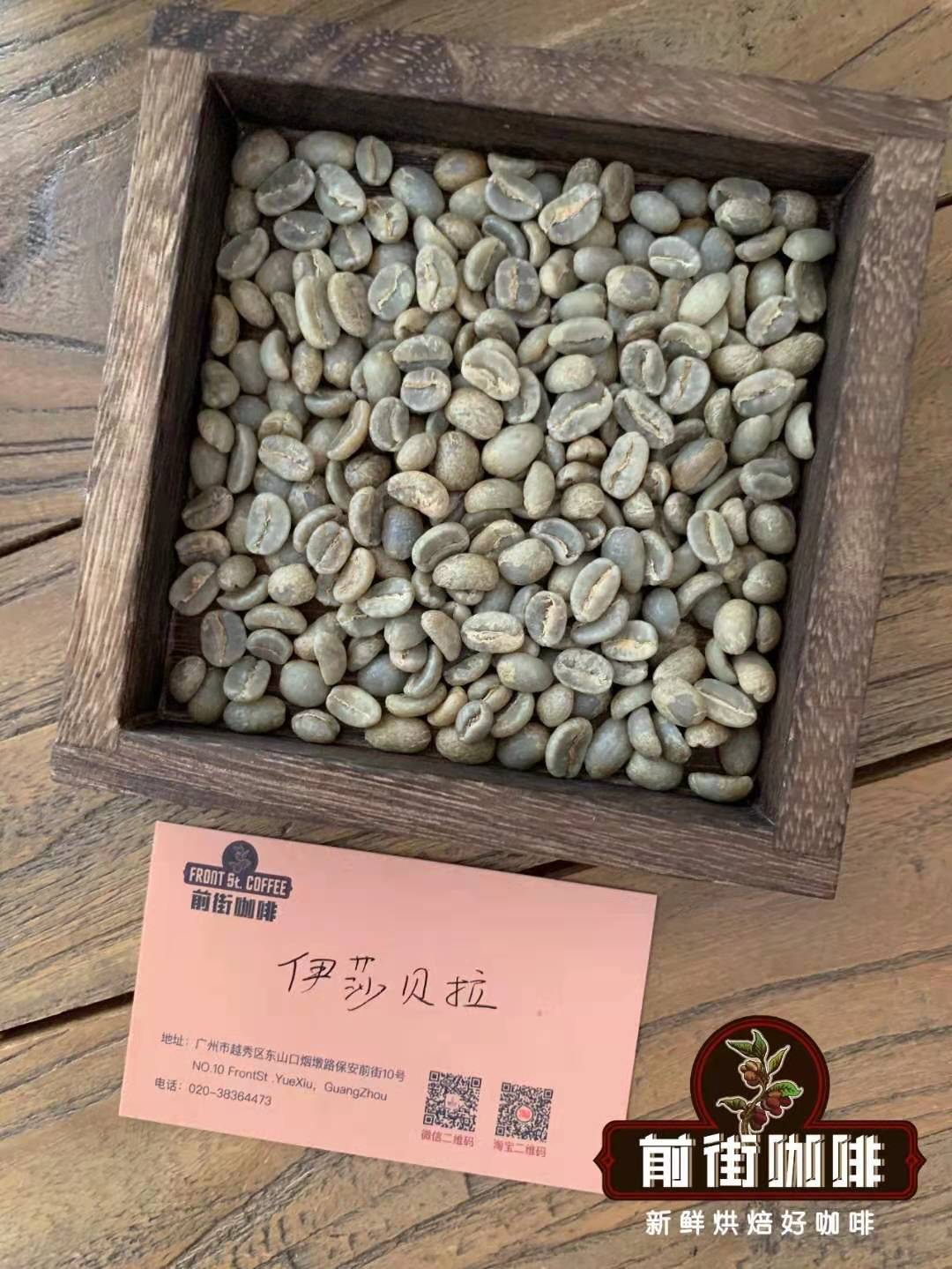
When brewing Colombian coffee beans, we need to pay special attention to hand-brewing parameters, such as the water temperature should not be too high. In addition to the deep-roasted beans using a water temperature of about 88 degrees Celsius, when brewing Colombian coffee beans, you can use a water temperature of about 90-91 degrees Celsius. In addition, Qianjie Coffee produces single coffee, so the ratio of coffee powder to water is 1:15. When serving one person, use 15 grams of coffee powder. If you brew more than one person, you can add 10 grams of powder per person.
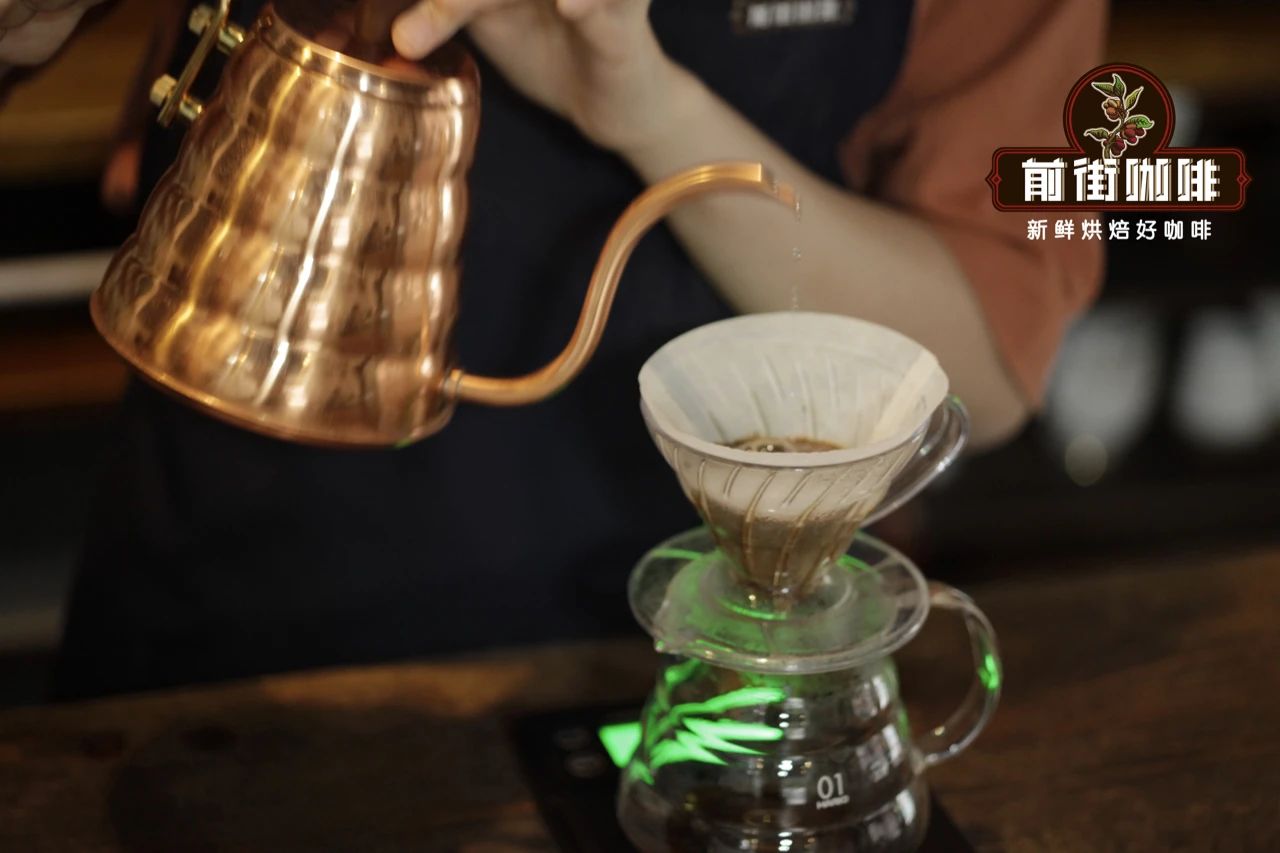
The above are the brewing parameters of Colombian beans in the front street coffee section, but they are not applicable to all coffee beans.
For more boutique coffee beans, please add private Qianjie coffee on Wechat. WeChat account: kaixinguoguo0925
Important Notice :
前街咖啡 FrontStreet Coffee has moved to new addredd:
FrontStreet Coffee Address: 315,Donghua East Road,GuangZhou
Tel:020 38364473
- Prev
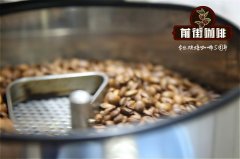
How to roast Colombia coffee beans Colombia coffee beans are inexpensive but of high quality
Professional coffee knowledge exchange More coffee bean information Please pay attention to coffee workshop (Weixin Official Accounts cafe_style) Roasting is the source of coffee flavor. Roasting raw beans by fire is called roasting. Raw beans cannot be drunk without roasting. Roasted coffee beans have determined 80% of the taste of coffee. The roasting process is very difficult. If the fire is too strong, the external ripening is endogenous, and if the fire is too weak, the internal ripening is overdone.
- Next
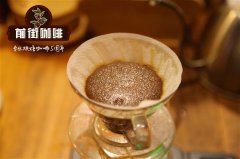
Colombian Coffee Bean Story Colombian Coffee beans have excellent flavor but the price is quite close to the people.
Professional coffee knowledge exchange more coffee bean information please follow the coffee workshop (Wechat official account cafe_style) my coffee trip to Colombia began 3 years ago, when Venezuela moved to Bogota, Colombia. When I was in Venezuela, I often heard people say that before Venezuela discovered oil, coffee was much more famous than Colombian coffee. And the Colombians
Related
- Does Rose Summer choose Blue, Green or Red? Detailed explanation of Rose Summer Coffee plots and Classification in Panamanian Jade Manor
- What is the difference between the origin, producing area, processing plant, cooperative and manor of coffee beans?
- How fine does the espresso powder fit? how to grind the espresso?
- Sca coffee roasting degree color card coffee roasting degree 8 roasting color values what do you mean?
- The practice of lattes: how to make lattes at home
- Introduction to Indonesian Fine Coffee beans-- Java Coffee producing area of Indonesian Arabica Coffee
- How much will the flavor of light and medium roasted rose summer be expressed? What baking level is rose summer suitable for?
- Introduction to the characteristics of washing, sun-drying or wet-planing coffee commonly used in Mantenin, Indonesia
- Price characteristics of Arabica Coffee Bean Starbucks introduction to Manning Coffee Bean Taste producing area Variety Manor
- What is the authentic Yega flavor? What are the flavor characteristics of the really excellent Yejasuffi coffee beans?

